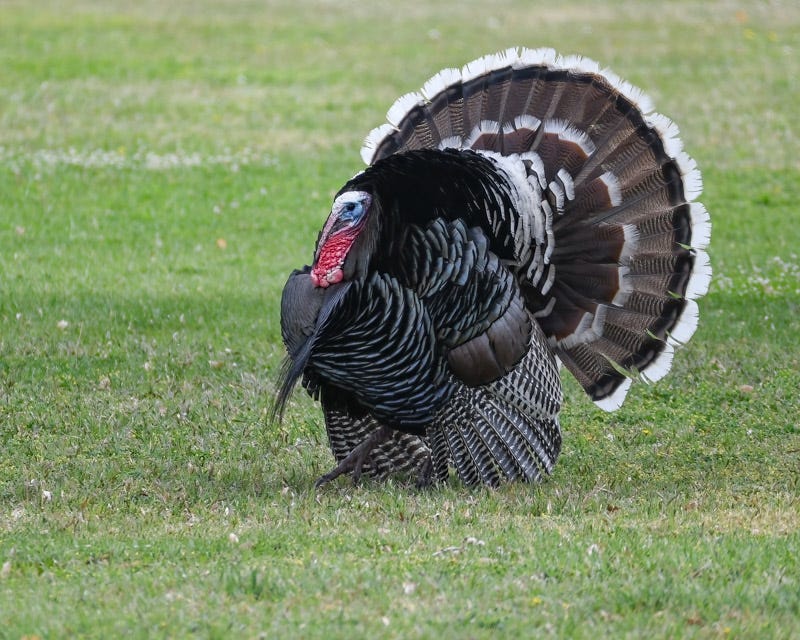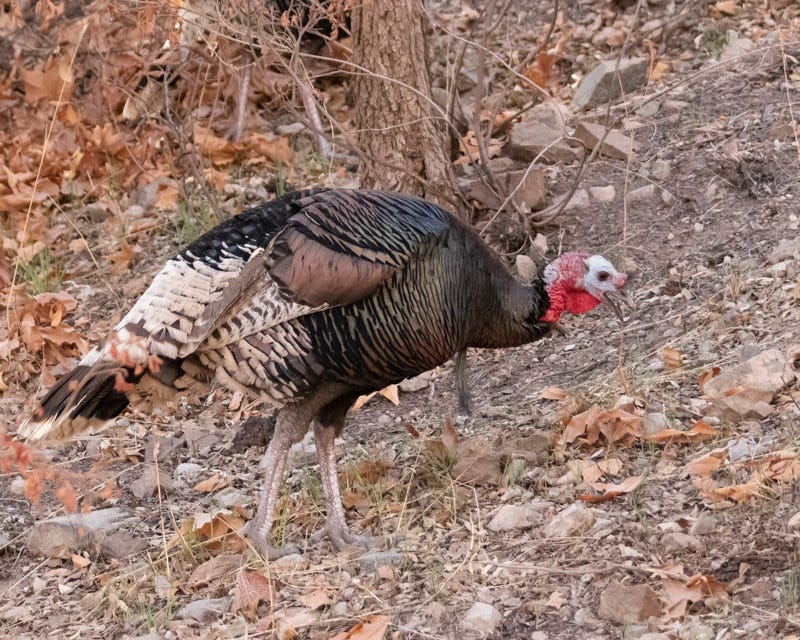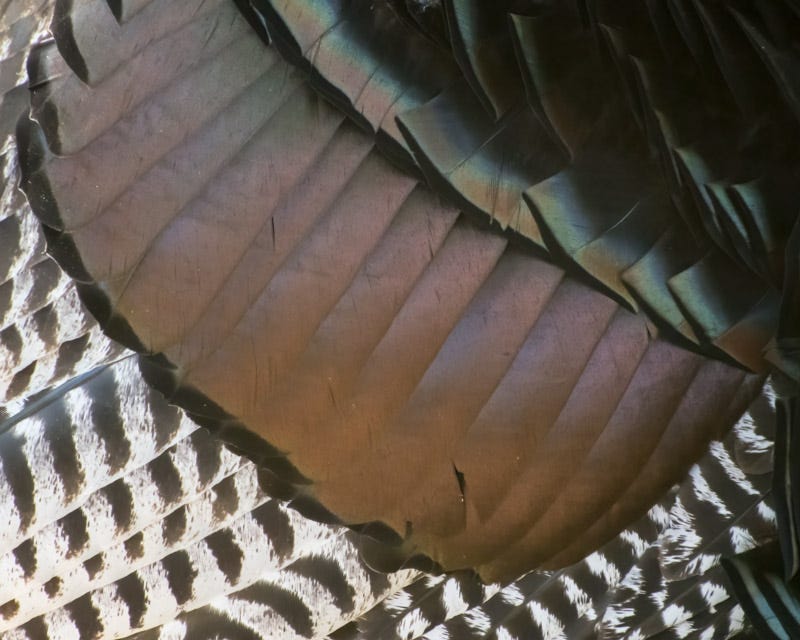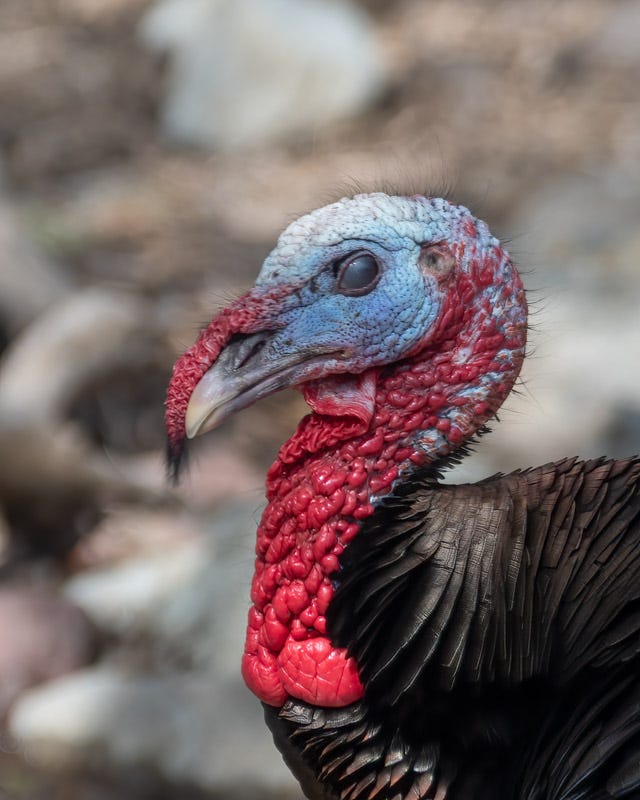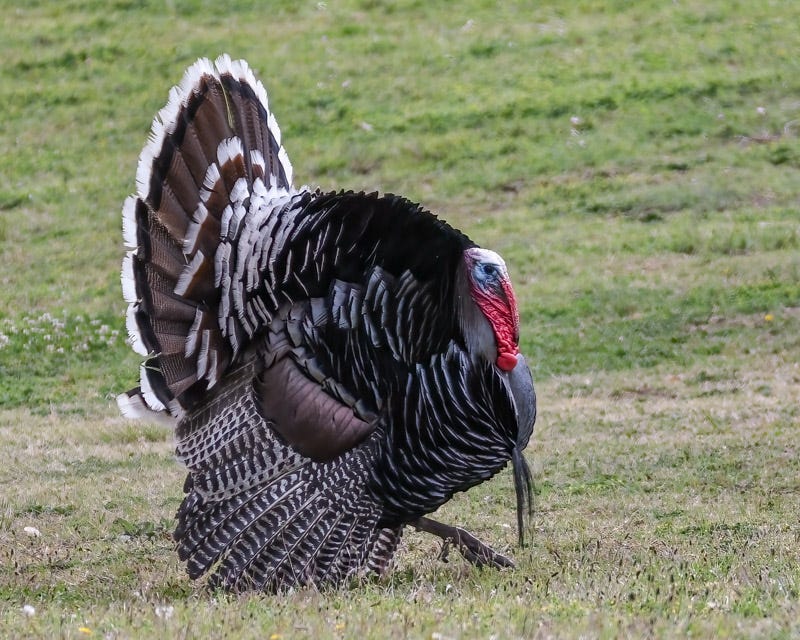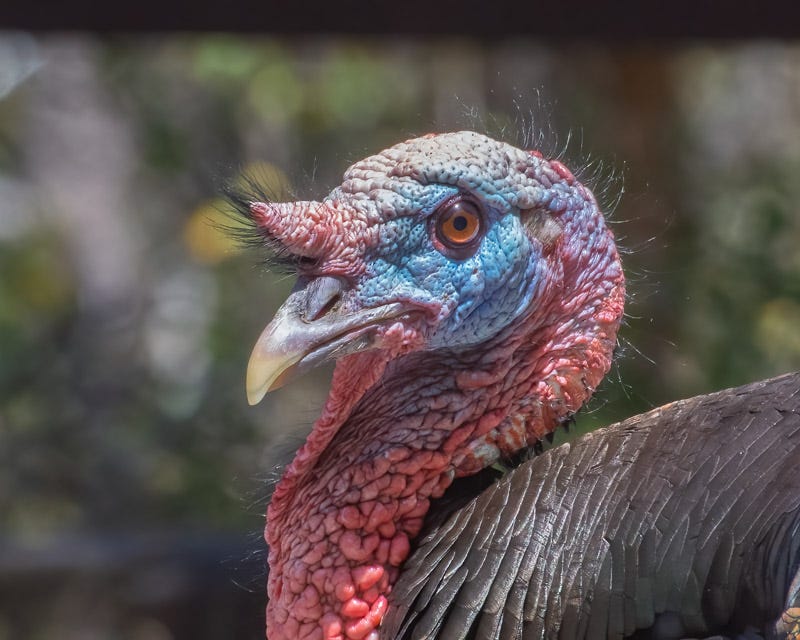Turkey, Turkey, Turkey
Wishing you a very good Thanksgiving
I’m sharing a number of photos I’ve taken of wild Turkeys over the past years. By the 1920’s, wild turkeys had been eliminated in Arizona due to hunting and habitat loss. Over the years, restoration efforts were attempted but failed. Finally, successful efforts to return the species, specifically Gould’s Turkeys, began in the 1980’s. Now, Gould’s Turkeys are flourishing in the Sky Islands of Southern Arizona like this male who was strutting across the old Parade Grounds at Fort Huachuca.
Gould’s Turkeys are the largest species of wild Turkey in the US. The faces of male Turkeys, called “Toms”, are colorful. The caruncles are the bumps on the Turkey’s head and the major caruncles are gorged with blood and bright red. A Turkey’s head may change colors from blue to white to red, depending on its mood.
One March, I saw a flock of Turkeys in Peppersauce Canyon on the north side of the Catalinas. The leaves were still their wintery brown which I thought lent a nice backdrop for photos of wild Turkeys.
The Turkeys were making their way along the hillside, feeding as they went. Gould’s Turkeys are a mountain species. They eat a variety of plant matter.
While the size and the face of Turkey’s draw the most attention, their feathers are really spectacular. Once, when I was looking at the Turkeys at the Santa Rita Lodge in Madera Canyon, I was having no luck in getting photos of the birds. I suddenly realized that the body feathers looked really special, and I began trying to capture them with my camera. The wing feathers are the striped ones.
A Turkey’s snood is the fleshy part of its face that drapes across its bill. The snood, like the facial skin and caruncles, can change colors depending on the Turkey’s mood. The length and bright color of a snood plays a role in courtship, as females seem to prefer longer and brighter snoods.
Here is the same Tom with its snood draped right over its bill. You can see that I happened to snap this photo right as the bird blinked and closed its nictitating membrane.
Male Turkeys, called ‘gobblers’, will “strut their stuff”! They do this both to impress females and to intimidate other males. The National Wild Turkey Federation explains what they are doing when they strut. Another unique physical feature of Turkeys is the “beard” that males have. See the long modified feathers dangling from the middle of the Tom’s chest? More on that later.
The iridescent feathers on a turkey’s body are brilliantly colored based on feather structure and not on their pigment. Similar to how a hummingbirde’s gorget is brightly colored, the feathers on the Turkey have a physical structure that breaks apart the light that hits it. Sunlight breaks apart and is refracted by the complex structure in those feathers. Research has shown that Toms with more iridescent feathers have fewer parasites. During breeding season, that iridescence lets hens know which Toms are healthier and more fit.
Younger Toms have shorter snoods. I’ve always felt that early scientists were influenced by Dr. Seuss when they named parts of Turkeys. I mean, words like a “snood”, a “caruncle”, and the “wattle” all would fit right into a Dr. Seuss book.
Here are some short Birdnote stories for you to enjoy this holiday weekend. Click on the links to listen and take your time. I’m going to enjoy the holiday weekend with my family and won’t be posting again until everyone has left town!!
Turkeys were probably domesticated by the Mayans 2000 years ago. Birdnote shares the history of Turkeys in this piece.
Turkeys got their name by accident. Here’s how.
What is the purpose of a Turkey’s beard?


